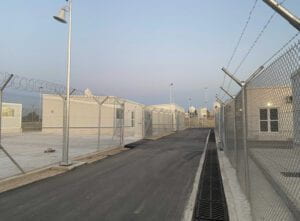Eric Raimondi, Still I Rise, Greece
My name is Eric Raimondi. Through the Gallatin Global Fellowship in Human Rights Program, I am traveling to Greece, where I will be interning in the advocacy department of the Italian organization Still I Rise and conducting research on Samos island that will complement my work with them. Since Still I Rise used to but no longer is present on the island of Samos, I will be working with them on a hybrid schedule. My tasks with the advocacy department will be to draft press releases, social media reports, and collect information on the ground from other non-governmental organizations (NGOs) in Greece.
On the island of Samos, human rights are disregarded on an unimaginable scale. This island, as well as the islands of Lesvos, Chios, Kos, Leros, are places of transit through which many refugees and asylum seekers pass on their longer journey to other European countries. These spaces, and significantly how they are designed by the authorities and navigated by refugees and migrants, signify the future of Europe.
For the last seven years, Greece has been in the spotlight in how it manages migration. The old Samos camp, initially a military base that was converted into a reception center, was physically unequipped to house the displaced population, but due to its location on the periphery of the central town, was accessible to the multiple humanitarian NGOs that emerged on the island. Now, both Greece and the European Union (EU) are embarking on a path of segregation and exclusion through new surveillance techniques, heightened security, and physical infrastructure. The new camp, officially named the Closed Controlled Access Centre (CCAC), although still under construction, received the island’s refugee population on September 18, 2021.

Through advocacy work with Still I Rise and research on the new CCAC, my project seeks to use testimonies from refugees and migrants, security guards and camp officials, humanitarian aid workers, and members of the local Greek population to explore how recent changes in camp design, location, and infrastructure impact human rights of the displaced at Europe’s border. What about the EU’s projects to construct new, isolated, and contained camps suggest about the union’s evolution regarding the human rights of displaced populations? How does the physical infrastructure of the camp – and the new technologies of surveillance– reflect and inform the EU’s handling of human rights?